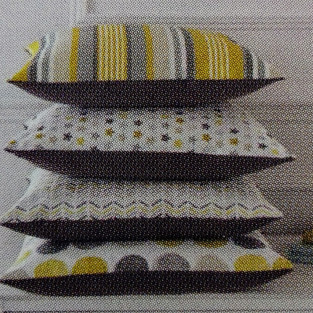A guide to curtains
- remishadingsolutions
- Jan 9, 2019
- 3 min read
Updated: Feb 28, 2019
What are curtains?:
To put it simply, curtains are a piece of fabric draped from a rail or pole in front of a window or door to provide shade from external light, privacy, and thermal insulation, they are also great at reducing drafts.
Recommended rooms:
Living room
Bedroom
Doorway
Anywhere you want a warm and cosy feel!
(Kitchens and bathrooms where you have a high level of moisture and cooking smells and grease are more suited to roller blinds with wipeable materials.)
Fabric options:
Shading Solutions has a diverse range of material on offer, we will bring samples round to your own home for you to spend time choosing the fabric that is right for you and your environment. We have plain and patterned materials in a large range of colour palettes.
The fabric composition depends on the type you choose, some are 100% cotton, others are a combination and can include cotton, polyester, viscose and linen. Details of your given choice can be provided, just ask us.
Heading options:

Pencil pleat- the traditional and standard heading for curtains. Curtains are gathered together using hooks in a heading tape on the reverse of the curtain at the top. These can be hung from a pole or a rail.

Eyelet heading- eyelets are placed at regular intervals along the top of the curtain, the curtain pole runs through the middle of the eyelets.

Double pinch pleat- A very popular modern classic style. Double folds are ‘pinched’ together at regular intervals and hand sewn into place. They use more material and are fuller than pencil pleat curtains. This style works best on a pole rather than a rail.

Triple pinch pleat- trios of folds are ‘pinched’ together at regular intervals and sewn into place to create a fan shape. As with the double pinch pleat, the curtain uses more material and is fuller. This style works best on a pole rather than a rail.

Wave- These hang and bunch in a similar way to the eyelet headed curtains except they hang from a track and can therefore be top or face fixed, inside or outside the recess and even right up to the ceiling. A great option for bifold doors.
Lining options:
Standard lining- white or ivory
Blackout - blocks light from permeating through the material.
Interlining- an additional layer of material between the main fabric and the lining fabric that can increase the insulation properties of the curtain, ideal for draughty locations.
Fire retardant- just as lovely material to feel and look at but with the additional safety benefit of being fire retardant. Ideal for both commercial and domestic settings.

Poles and tracks:
Poles are available in both metal and wooden colours and a range of decorative finials. Just ask and Shading Solutions will show you the range.
Rails are available in metal or plastic and can be fitted to the upright wall (face fixed) or to the ceiling/ top of the recess (top fixed). Rails are ideal in a bay window as they can be bent to follow the angles of the bay window.

Tie backs:
When your curtains are open, you are going to want a neat way to keep them tidy. A tieback in a matching fabric is a traditional and sophisticated option. Tie backs are a strip of fabric that gets wrapped around the bucked curtain and are usually fixed to the wall with a metal hook.
You may want to opt for a metal hold back. Hold backs are a simple loop of metal that the curtains can be tucked behind.
Looking after your curtains:
Curtains are a barrier between outdoors and internal rooms so are likely to pick up a small amount of dust and dirt that travels on drafts and the wind when the window is open.
To reduce the build up of this you could simply dust and or hoover your curtains. Start at the top and work your way down concentrating on the hems and any folds where the dust may accumulate more.
A lint cloth or damp cloth are also helpful in removing the dirt, make sure you dust before applying a damp cloth to remove excess dirt that may otherwise be smeared in by the damp cloth.
For more heavy duty cleaning, the curtains need to be taken down and dry cleaned.
Matching cushions:
Cushions made to match your curtains.
Sizes available:
400mm x 400mm
300mm x 500mm
600mm x 600mm
If you are interested in curtains for your home or work place, get in touch to arrange a free, no obligation measuring and consultation appointment.
07765490783
www.shadingsolutions.co.uk












Comentários